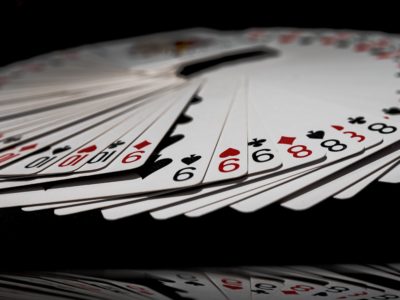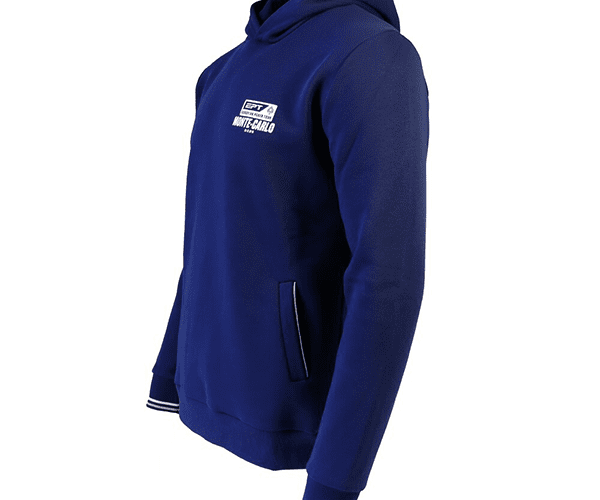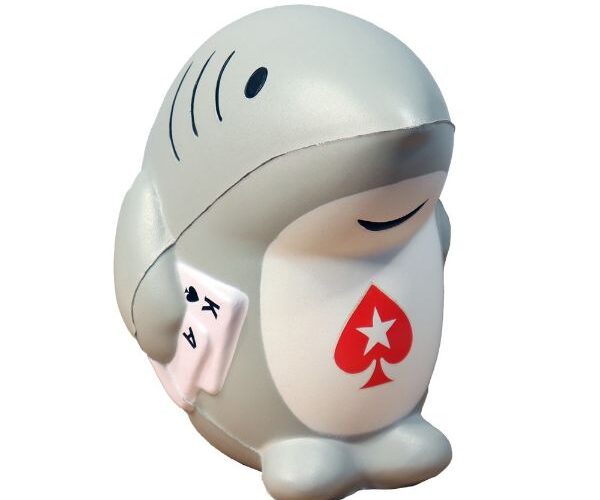If you’ve ever read or watched pro poker players analyze hands, you’ll notice that they weigh up a number of factors when making their decisions. It’s not all about the cards. It’s also about position, stack sizes, the other players at the table, and so much more.
At first, this can seem almost mystical – something totally out of reach for us mere mortals. But with a bit of training, it’s possible to develop your thought process to take into account all of the relevant factors when you play a hand.
It all starts with these seven questions:
-
-
What cards am I holding?
-
New players usually start with the question. “What cards am I holding?”. It’s a very reasonable place to start. You’ve just got to remember that it’s not the only question.
If you look down and see 7♦ 2♣ , then you’ll be folding nearly 100 percent of the time. No need for much thought. Chuck it in the muck. If you have playable starting cards, then take a pause… Before you take action, you’ll want to start thinking about the other factors involved in the hand.
Knowing what cards are “good” doesn’t make you a great player. If it did, poker would be a very easy game. The cards are the starting point for the situation as a whole.
Getting familiar with these other factors is what really sets the better players apart. Take a deep breathe… there’s a lot more thinking to do before you take action.
Takeaway point: Your cards are a big factor, but there are lots of other questions you should ask yourself before you decide on the best way to play the hand.
-
-
What is my position?
-
Position is such a strong factor that it effectively alters the strength of the cards you’re holding. Of course, you can raise hands like pocket Aces and Kings from any position, but when it comes to more marginal holdings position will count for a lot.
The ‘dealer’ button is the strongest position. The other players all have to make their move first, which gives you more information and more ways to win the pot. Playing from early position means you’ll have lots of players left to act behind you, making your life more difficult both pre-flop and post-flop.
For example, K♥ 10♣ is often a strong hand to raise with from the dealer button, but not so strong from early position with lots of players to act behind you. Even A♠ J♣ , which would usually make for a playable hand, can become questionable from early position, depending on other factors.
Hands like suited connectors become much more playable in position. Out of position, you can often find yourself in trouble, facing big bets to stay in the pot with a draw, or unsure whether your middle pair is good. In position, you have options to check it back, semi-bluff with draws, and control the pot size when you pair up.
Position changes everything about what and how you play, both pre-flop and post-flop. Respect it!
Takeaway point: When determining the strength of your hand, always consider position and the number of players that are left to act behind you.

The “dealer” button is strategically the best position on the table
-
-
How many big blinds do I have?
-
To a certain extent, stack sizes dictate hand ranges, as well as how you should play your cards. Thinking about your stack in terms of big blinds will help you to gauge the value of your chips in a more meaningful way. This is especially useful in tournament poker, where the blinds continue to rise and put pressure of short stacks. PokerStars has a feature to view your stack size in big blinds.

PokerStars has a feature to allow you to see your chip stack in big blinds
Flat calling raises or speculating with marginal hands when you have a short stack is nearly always a sure fire way to lose chips and crash out of the game. You have less options, and are looking for a spot to steal or double up. Playing with a deeper stack gives you a lot more options, but also puts you at more risk.
For example, you’re holding A♥ J♥ on the button. With 10 big blinds, you would usually want to shove all-in. With 100 big blinds, shoving all-in would be a mistake. You would want to raise and play in position post flop. The depth of the stacks would affect your approach post-flop, such as whether aim to quickly get the chips in on the flop with top pair, bet multiple streets, or control the pot size to avoid going broke.
You should also consider your opponents’ stack sizes. This is often overlooked. If you have 100 big blinds, but your opponent only has 20 big blinds, then you are effectively playing for 20 big blinds – that’s how much you stand to gain or lose.
Takeaway point: Before deciding on a course of action, always consider your own stack, as well as any opponent’s who are in the hand, and who are still left to act behind you.
-
-
What has the action told me?
-
You’re looking down at a nice looking J♣ 10♣ , on the button, with a 40 big blind stack. A player raises in mid position. It’s all good, you think. I’ll call and see a flop. Then the next player re-raises. Alarm bells start ringing.
You were originally planning to get involved, but now the action is telling you to have a rethink. That’s not to say you should instantly fold at the first sign of danger. You should, however, consider how the actions of your opponents impacts the strength of your hand.
Raises and re-raises are a bit like a conversation – your opponents are telling you (and each other) that they have a better hand. Unless you think they’re both bluffing, then J♣ 10♣ looks less attractive. It’s not a hopeless case, but it’s dubious.
Always consider the action before you. If all players have folded, then you can generally open up and play more hands. If faced with raises and re-raises, proceed with more caution, or reconsider your line and find moments to come over the top of opponents. Keep up with the action as it unfolds during a hand.
Takeaway point: Consider what has already happened during the hand, both pre-flop and post-flop. What does this tells you about the cards that the other players could potentially be holding?
-
-
What type of players am I up against?
-
By now you’re probably itching to play your cards. Your time bank is beeping like crazy. Chill. There’s still more questions to ask yourself… What type of players are you up against?
Let’s roll with the J♣ 10♣ example used above. Against tight opponents, you’d usually be folding to a re-raise, assuming they had something in the range of AQ+, maybe Tens+. But let’s say the original raises was playing nearly every hand, and the re-raiser was a loose aggressive player who you suspect is playing back. Now the situation looks different, and you might opt to call or even 4-bet.
The same applies to any situation in poker. The type of opponent can dramatically change how you would play a hand. Take raising an opponent’s blinds. Is the player in the big blind likely to fold unless they have a very strong hand? Will they often call pre-flop and then fold the flop if they miss? Or are they sick of you raising and just about ready to fire back out of spite? And what about the small blind?
Although mathematical at its core, poker is played against other people. Your hand strength is relative. Your actions don’t exist in a vacuum. Being aware of other player’s hand ranges, tendencies, and emotional states will take you from being an okay player, to being a great one.
Takeaway point: Always think about the type of players who are in the hand, or still left to act behind you. Are they aggressive? How often do they call or bluff? How are they feeling?

LAG opponents are not easy to play against. They are identifiable by their grins.
-
-
How will I react if ‘Player X’ fires back?
-
Let’s say you’re on the button with a 50 big blind stack and the action has folded round to you. You make a raise with K♥ J♦ . The small blind re-shoves for 18 big blinds. In the heat of the moment, you’re unsure what to do.
To avoid this happening, it’s useful to consider the possibilities before you even make the play. Will you fold or call if the small blind re-shoves? How will you react if the big blind comes along? What if the small blind folds but the big blind re-raises? Go into each betting street with a plan, and think ahead of time how you will react to possible outcomes. This will stop you from getting caught off guard and reacting emotionally.
Let’s say you’re in the same situation, but with Q♦ 8♣ . You consider raising to steal the blinds, but then you decide that the stack sizes aren’t great, and that you would have to fold if either the small blind or big blind raised. You know your opponents are the type to play back, so you decide to fold.
Before you take action, ask yourself, “How will I react if Player X fires back?”, and run through as many scenarios as possible in your mind.
Takeaway point: Have a plan!
-
-
Should I fold, call or raise?
-
By now, you’ve asked yourself six questions that have led to you analyzing your hand in a lot more detail.
You’ve: looked at your hand, took note of your position, counted how many big blinds you have, watched the action before you, weighed up the tendencies of other players in the pot, and come up with a plan for the hand.
If you’ve asked yourself all of these questions, then you can say that you’ve made the best decision you can according to the situation, and within the realms of your own knowledge. And that just feels nice, doesn’t it?
The only question left is whether to call, raise or fold? It’s the final thought in the process. The one that gets you to either muck, or throw chips in the middle. It’s your decision to make!
Takeaway point: After you’ve asked all of the other questions, all that remains is whether to raise, call or fold?
Summary: Talk to yourself during play
It’s great reading these questions on the Blog. No really, I appreciate it.
Now it’s up to you to absorb and integrate questions like these into your own thought process. You want them to routinely run through your mind as you’re playing poker hands. Almost like you’re talking to yourself. It’s a rational kind of insanity, and one that ultimately helps you to become a better player.
Here’s a summary of the seven questions, so you can quickly refer to them as you play poker:
- What cards am I holding?
- What is my position?
- How many big blinds do I have?
- What has the action so far told me?
- What type of players are in the pot?
- How will I react if ‘Player X’ fires back?
- Should I call, raise or fold?
(Any missing? Feel free to add your thoughts in the comments section…)
Back to TopView Other Blogs





























